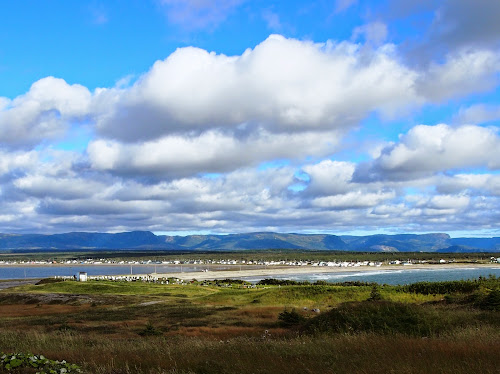The Northern Peninsula, essentially from Cow Head north, is a raw and beautiful place. The Long Range Mountains run the length of the peninsula until they plunge into the sea and form the backbone of the peninsula. You must contend with them when moving from the west to the east sides and experience the boggy tops. Fishing is the life of the peninsula, with villages lining most every cove. Along the highway, tucked just off the road are stashes of hundreds of lobster traps, informal storage for fishermen pressed for space by their docks. Large stacks of firewood are also kept by residents along the highway to season the wood. We’re told that by winter those stacks will have been taken by the residents to their homes. They purchase a permit from the government to cut the wood because there isn’t another affordable heating option on the island. Also along the highway are small vegetable gardens nestled between the roadway and the forest or bogs. Apparently, the fill used when the highway was built is the best soil in the region, as the natural soil is soaked with the tannin of the bogs, making it very difficult to grow food.
We stopped by Flower’s Cove, saving the airfare to Australia, to see thrombolites. A little dog greeted us in the parking area and led us out to the site.
There’s a little park where the sea has carved arches in the rock.
Lighthouses line the coast . . .
. . . as well as outhouses.
Before heading south for another visit to Gros Morne and then east to visit other areas of Newfoundland, we left our room on the bay at Cow Head to explore the town. There is an isthymus connecting a small island called “The Head” to what is currently the main part of town. In the old days, everyone lived in a summer fishing camp out on The Head and moved across the isthymus to a more secure position for winter.




















